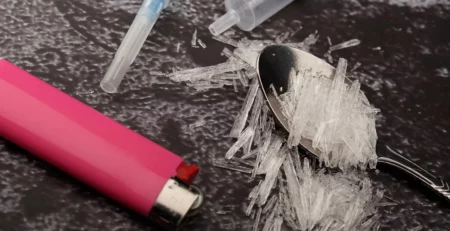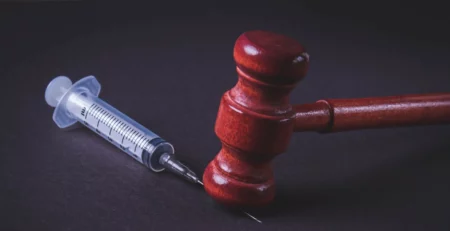Does Alcohol Show Up on a Drug Test?
Get Answers and Resources for Alcohol Treatment at Icarus
There are many reasons why someone might need to submit to drug testing. Drug testing is a relatively common practice during hiring for a new job, for legal reasons, or regarding some medical concerns. But a common question may often come along with such tests: Does alcohol show up on a drug test?
Some people are concerned; while alcohol is legal for adults 21 and older, there are still some social stigmas that go along with drinking, especially in specific careers. And when it comes to someone with legal troubles, the pressure becomes even more severe.
If you are worried about alcohol testing regularly or just need answers now, you have come to the right place!
Read on to learn the answer to whether alcohol shows up on a drug test. In addition, we’ll address a secondary but closely related question about alcohol testing: How long does alcohol stay in your system? Perhaps most importantly, we will also look at how Icarus Behavioral Health in Nevada can offer effective treatment options if alcohol has become a problem in your life!
Understanding Drug Tests and Alcohol Detection

Drug tests come in several formats, each specifically detecting certain substances and their metabolites in the body. The most commonly utilized types of alcohol and drug tests include the following:
- Urine Tests: These rank among the most widely used tests. Many locations prefer the urine test due to its non-invasive nature and the ability to detect many different substances.
- Blood Tests: While they are more fussy to administer, a blood test can give a more exact measurement of any chemicals in the bloodstream.
- Breath Tests: These are a quick way law enforcement agencies measure blood alcohol content in the field. They are non-invasive and give quick results. A main drawback is that poorly maintained devices may yield inaccurate measurements.
- Saliva Tests: Rising in popularity, these tests are best known for their ease of administration.
- Hair Follicle Tests: These tests provide a longer substance-use detection window, with substances remaining in the hair for as long as ninety days.
Uncover the Facts About Alcohol in Drug Testing – Call Now!
Does Alcohol Show Up on a Drug Test? Get Answers!
The straightforward answer is yes. But it’s more nuanced than that.
Alcohol can show up on some drug tests. However, alcohol detection depends on several factors, including the type of test administered and when someone last drank alcohol relative to when the test was given.
Let’s look a bit more in-depth into how each of the above-mentioned drug tests detect alcohol:
Urine Tests
Here are a few key facts about urine sample testing for alcohol or drug consumption:
- Detection Window: Urine tests can detect alcohol in your urine for up to 48 hours after you drink it. However, this window may differ according to several factors, including the amount of alcohol you may have consumed and your metabolism.
- Metabolites Detected: A urine test primarily looks for ethanol, the active ingredient in alcoholic beverages. In addition, they can catch metabolites like ethyl glucuronide (EtG), indicating alcohol consumption even after the ethanol is no longer detectable.
Urine alcohol tests are preferred in many settings, including at work and during medical exams, because of the easy collection of a person’s urine sample and the reliability of the urine test.
Breath Tests
The breath test is most famously used by law enforcement for the initial suspicion of driving under the influence of drugs or alcohol. Here’s what you need to know:
- Detection Window: Detects current alcohol levels; it effectively assesses recent consumption.
- Accuracy: Breath tests are generally accurate for measuring blood alcohol concentration (BAC) at the time of the test.
Breath tests are helpful for situations when an immediate assessment is needed. Alcohol detected using this test works for only a few hours after consumption.
Blood Tests

Here are some crucial takeaway points about blood testing for alcohol or drug consumption:
- Detection Window: Alcohol can appear in the bloodstream for up to 12 hours. This window is shorter in duration than urine tests. That’s because because the body metabolizes your blood alcohol faster.
- Accuracy: Blood tests are incredibly accurate and precisely measure the alcohol level in the bloodstream during testing.
These tests are often used when law enforcement officers suspect impaired driving. They are highly regarded as court evidence because they accurately determine blood alcohol levels.
Saliva Tests
Here are a few things you should know about saliva testing:
- Detection Window: Saliva tests can detect alcohol somewhere between 12 to 24 hours after you consume it. This short timeframe makes them useful for short-term detection of alcohol use. While saliva tests are less intrusive than a blood draw, they are also quite sensitive and can accurately catch the presence of alcohol in the saliva.
- Convenience: These tests are becoming more widely used due to their easy oversight and non-invasive nature.
Employers often prefer these for convenient workplace screenings. You can find them in your local pharmacy, labeled at-home test kits.
Hair Follicle Tests
Here are some critical details – including a caution – about hair follicle testing:
- Detection Window: Although they are not the preferred method for looking for alcohol usage, hair follicle tests can theoretically identify alcohol consumption for up to 90 days. That’s because metabolites of alcohol can be deposited – and remain – in the hair shaft for several weeks.
- Long-Term Use Detection: These tests are most beneficial for detecting both alcohol and drug use over weeks, rather than recent consumption.
It’s essential to approach hair strand tests with caution. These tests can be influenced by external factors beyond one’s control, such as environmental exposure to alcohol. Thus, someone might falsely test positive.
EtG and EtS Tests

EtG (Ethyl Glucuronide) and EtS (Ethyl Sulfate) are two test types often used for alcohol metabolites. Understanding the differences between the two tests is necessary when discussing the many nuances of the detection of alcohol consumption.
Here’s a breakdown of their key differences:
EtG Test Overview
Here is some information about EtG testing:
- Metabolites Detected: Detects Ethyl Glucuronide (EtG), a direct metabolite of ethanol.
- Detection Window: It detects alcohol in the urine stream for up to 48 hours, potentially extending to 72 hours or more, depending on the amount consumed.
- Test Sensitivity and Specificity: This very sensitive test can detect low alcohol levels. However, this sensitivity may lead to false positives from exposure to alcohol in non-beverage forms.
- Usage in Testing Scenarios: Commonly used in scenarios requiring detection of any alcohol consumption, such as in alcohol treatment programs, legal systems, and employment.
While sensitive, the potential for false positives from external alcohol sources can impact its reliability.
Confidential Alcohol Use Assessment – Call Now!
EtS Test Overview
Next, let’s look more closely at EtS:
- Metabolites Detected: This test looks for Ethyl Sulfate (EtS), another metabolite of ethanol produced when ethanol is metabolized with sulfate.
- Detection Window: Similar to EtG, it has a long detection window, often comparable in duration to EtG’s.
- Test Sensitivity and Specificity: It is sensitive like EtG; still, it’s generally more specific. It’s less likely to produce false positives from incidental environmental alcohol exposure.
- Usage in Testing Scenarios: Often used in conjunction with EtG tests to confirm alcohol consumption to provide more substantial evidence of ethanol ingestion and reduce the likelihood of false positives.
Using EtS testing alongside EtG enhances the reliability of the results, confirming that detected alcohol is due to actual ingestion rather than external exposure. No matter the type of testing, our resource on the best defense for positive results of testing can help you set a proactive approach that takes action with accountability.
What are the Factors Influencing Alcohol Detection?

Gaining more insight into the factors that influence how long alcohol remains detectable in your system is crucial. This information becomes even more imperative if you are preparing for a narcotic test or managing your liquor consumption.
These factors vary from one person to another. Besides that, they also answer the question: how long does alcohol stay in your body? Finally, they can significantly impact the window when a test can detect alcohol in your system.
The Amount of Consumed Alcohol
How much alcohol you consume is one component of its detectability during an alcohol test. The more spirits you drink, the longer it takes for your body to metabolize and eliminate it. In other words, large amounts of liquor can stay detectable for longer periods.
This factor may weigh significantly in tests like EtG and EtS, which aim to determine your recent alcohol consumption.
Your Metabolic Rate
Individual metabolic rates are another crucial factor in how quickly your body processes and eliminates alcohol. Metabolism varies widely among individuals due to differences in genetics, wellness, and other lifestyle factors.
A faster metabolism generally means a shorter detection window for alcohol. On the other hand, a slower metabolism can prolong the period of alcohol detection.
Age and Gender Can Also Affect Testing
Age and gender are additional facets that may influence alcohol metabolism. In general, younger individuals tend to have a faster metabolism. Thus, their bodies can process alcohol relatively quickly.
Additionally, there are physiological differences between genders that can affect alcohol metabolism. For example, men appear to metabolize alcohol faster than women due to differences in body composition and hormone levels.
Recent Food Intake
Having food in the stomach (or not!) at the time of alcohol consumption can also influence the alcohol absorption rate. Eating before or while drinking alcohol can slow down the absorption of alcohol into the bloodstream.
This slower absorption rate can affect how quickly alcohol levels rise in the body and, as a result, how long it remains detectable in a test. This factor is particularly relevant for tests that measure current alcohol levels in the system, such as blood and saliva tests.
Alcohol Use Disorder Is an Illness

Do you struggle with alcohol and need help? Drinking too much once in a while is one thing. But when it becomes a problem, it may mean you have a medically-recognized diagnosis – Alcohol Use Disorder (AUD).
Alcohol addiction means you can’t control or quit drinking despite knowing about the negative consequences. It is a medical condition influenced by various factors, including genetics.
Once you realize that this is a mental health disorder – an illness – it can take the weight of the world off of your shoulders.
We Accept Most Major Insurance Providers – Call Now!
Getting Help for Alcohol Abuse at Icarus Behavioral Health
If you or someone you know is asking, “Does alcohol show up on a drug test?,” or, “How long does alcohol stay in my body?” it may reveal an alcohol addiction that is starting to spiral out of control. Right now is the time to seek help.
It can be scary to ask for support, but seeking help for alcohol is a vital foundation for taking back your life. Covering it with mouthwash can only carry you so far – our help makes it possible to eliminate alcohol from your life in a lasting and healthy way.
If you need our help, we are here to guide you – today can be the day you take the brave step and get help. Connect with us now, and your healing can start today!











